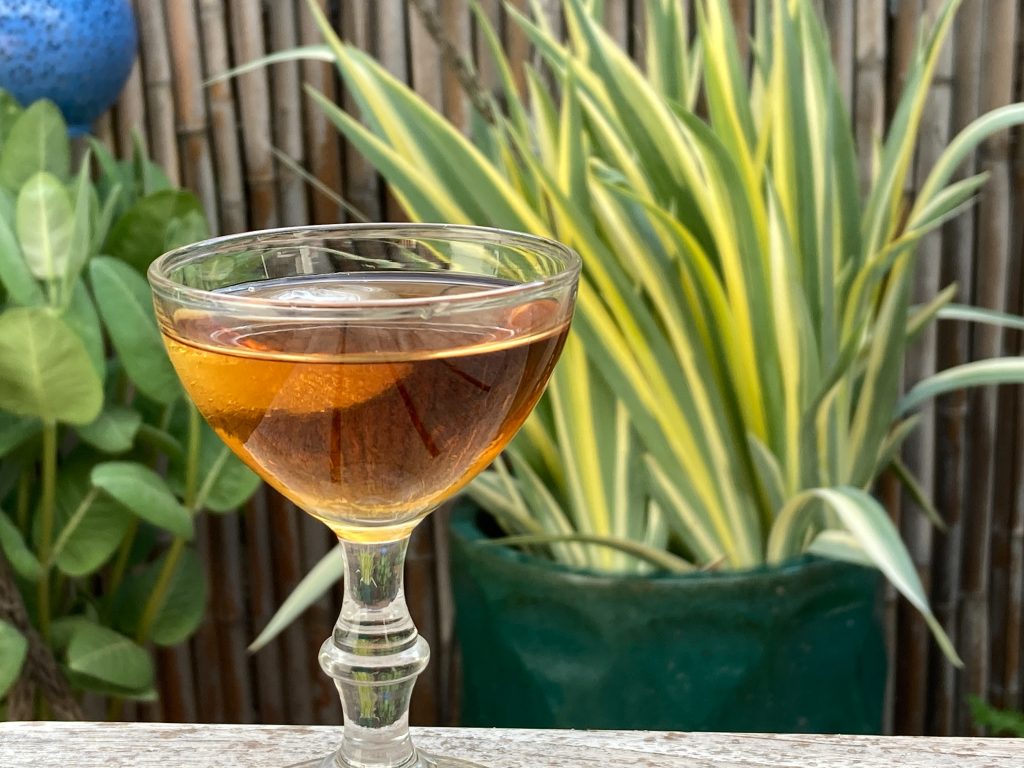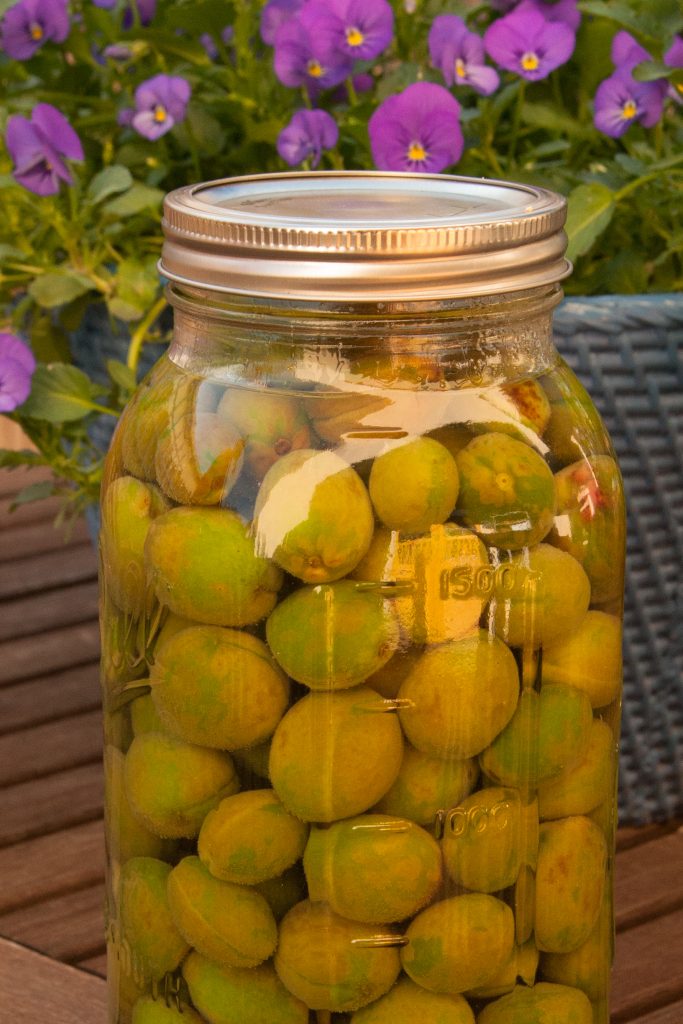
I’m not 100% sure what I should call this (except delicious!) but it was inspired by umeshu, the Japanese liqueur made from unripe ume (plums), rock sugar, and shochu (a clear, flavorless, distilled spirit). My foraged version is made with unripe apricots, granulated white sugar, and vodka. Since I think I invented this, I’m going to claim naming rights: Apricot Umeshu!
In Japan, the fruit comes from Prunus mume, and although that’s considered a plum, it’s actually more closely related to the apricot. It’s in the Armeniaca section of the genus Prunus, and the apricot is Prunus armeniaca.
Lucky me! The streets of Santa Fe are loaded with apricot trees as are many of the alleys in our neighborhood. I consider the branches that extend into streets and alleys to be fair game, and now is the time to pick the green fruit.
This recipe couldn’t be simpler. Mostly what you need is patience. And as one of the least patient people on the planet (ask my husband), I can tell you it’s worth it. The finished product is more floral than fruity but there’s a hint of apricot flavor in there. Once you’ve made it, you’ll look forward to unripe apricot season every year. The recipe can be scaled.
What You’ll Need to Make Apricot Umeshu
- 2 quarts unripe apricots
- 1 cup granulated sugar
- vodka!
What You’ll Do to Make Apricot Umeshu
Let the fruit put on some size before you harvest. I look for fruit about an inch long, still green. It’s ok if a few of the apricots are showing a blush of orange, but you don’t want ripe fruit for this recipe. Wash the fruit, and remove any blossoms that stick to the ends.
Prick the apricots to allow the juices inside to meld with the vodka and the sugar, then transfer the clean, pricked fruit to a half gallon container with a tight fitting lid.
Add a cup of sugar to the jar, then fill it up with vodka and cap the jar. Give it a vigorous shake. You’ll need to shake it several times per day until the sugar dissolves,
A word of warning: SOMEtimes there appears to be fermentation during the first few days of maceration. I say “appears to be” because fermentation shouldn’t be possible in vodka. But I see bubbles coming out of the holes in the apricots, and the canning jar lids often pouf out, as if under pressure from gas build up. When I notice that, I open the jars, let the built up gas escape, and all is well. This only happens during the first week of maceration, and my best guess (thank you John Keane) is that because most solids have some gasses trapped inside them, the piercing of the fruit allows that gas to escape in a process called outgassing.
Now comes the hard part: Wait three months.
I know. It’s hard. You may open the jar and sniff if you like, but try to refrain from tasting until 90 days have passed. Then strain off the fruit and taste your liqueur. You’re looking for a pleasant sweet/sour balance. I usually add a little simple syrup at this point. You’ll make this decision according to your personal taste. For me it’s usually a ration of 20:1 or 15:1, liqueur to simple syrup.
In Japan, umeshu is sometimes used in cocktails, but I drink my apricot umeshu with a single cube of ice. I want to experience that unique, seductive flavor all on its own. It’s superb.




Do you think this would work well for unripe peaches too?
I think it’s worth a try! The flavor would be different, but I bet it would be good. If you try it, please lmk how it turns out.
can i substitute green italian plums?
Why not? I don’t know how it would taste, but give it a try and let me know how it works out! Although I wouldn’t expect Italian plums to be green at the end of July, but maybe where you live that’s the case. Or maybe you’re thinking ahead to next year. Good luck!